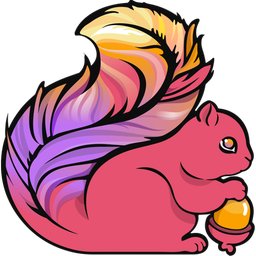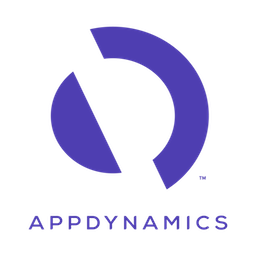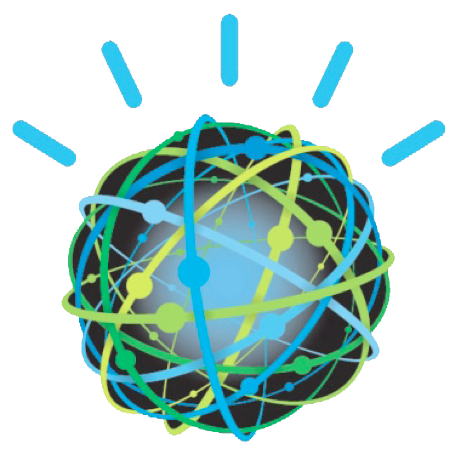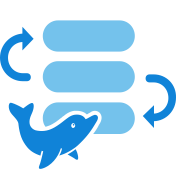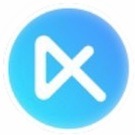OSHI is a free JNA-based (native) Operating System and Hardware Information library for Java. It does not require the installation of any additional native libraries and aims to provide a cross-platform implementation to retrieve system information, such as OS version, processes, memory and CPU usage, disks and partitions, devices, sensors, etc.
Windows • Linux • macOS • Unix (AIX, FreeBSD, OpenBSD, Solaris)
- API (javadocs) - Operating System / Hardware
- FAQ
- Find OSHI on Maven Central
- Upgrading from an earlier version?
- Computer System and firmware, baseboard
- Operating System and Version/Build
- Physical (core) and Logical (hyperthreaded) CPUs, processor groups, NUMA nodes
- System and per-processor load, usage tick counters, interrupts, uptime
- Process uptime, CPU, memory usage, user/group, command line args, thread details
- Physical and virtual memory used/available
- Mounted filesystems (type, usable and total space, options, reads and writes)
- Disk drives (model, serial, size, reads and writes) and partitions
- Network interfaces (IPs, bandwidth in/out), network parameters, TCP/UDP statistics
- Battery state (% capacity, time remaining, power usage stats)
- USB Devices
- Connected displays (with EDID info), graphics and audio cards
- Sensors (temperature, fan speeds, voltage) on some hardware
| Stable Release Version | Current Development Version | Dependencies |
|---|---|---|
| oshi-core-5.7.4 | oshi-core-5.7.5-SNAPSHOT | JNA • SLF4J |
| Java 11 (JPMS) Version | Current Development Version |
|---|---|
| oshi-core-java11-5.7.4 | oshi-core-java11-5.7.5-SNAPSHOT |
-
Include OSHI and its dependencies on your classpath. We strongly recommend you add OSHI as a dependency to your project dependency manager such as Maven or Gradle. You can find the appropriate syntax to include OSHI here.
-
Create a new instance of
SystemInfo -
Use the getters from
SystemInfoto access hardware or operating system components, such as:
SystemInfo si = new SystemInfo();
HardwareAbstractionLayer hal = si.getHardware();
CentralProcessor cpu = hal.getProcessor();
See the PERFORMANCE document for general CPU/Memory tradeoffs and specific Windows (WMI) recommendations depending upon your application.
See the FAQ document for common implementation and calculation questions.
Some settings are configurable in the oshi.properties file, which may also be manipulated using the GlobalConfig class. This should be done at startup, as configuration is not thread-safe and OSHI does not guarantee re-reading the configuration during operation.
The oshi-demo artifact includes several proof-of-concept examples of using OSHI to obtain information, including a basic Swing GUI.
Note: OSHI uses the latest version of JNA.
If you experience a NoClassDefFoundError or NoSuchMethodError issues with JNA artifacts, you likely have
an older version of either jna or jna-platform in your classpath from a transitive dependency on another project.
Consider one or more of the following steps to resolve the conflict:
- Listing OSHI earlier (or first) in your dependency list
- Specifying the most recent version of JNA (both
jnaandjna-platformartifacts) in yourpom.xmlas dependencies. - If you are using the Spring Boot Starter Parent version 2.2 and earlier that includes JNA as a dependency:
- Upgrade to version 2.3 which does not have a JNA dependency (preferred)
- If you must use version 2.2 or earlier, override the
jna.versionproperty to the latest JNA version.
- For bug reports, feature requests, or general questions about OSHI's longer term plans, please create an issue.
- For help integrating OSHI into your own project or maintainer code review of your PRs, tag
@dbwiddisin issues or pull requests on your project site. - For "how to" questions regarding use of the API, consult examples in the
oshi-demoproject, create an issue, or search on Stack Overflow using theoshitag, asking a new question if it hasn't been answered before. - To say thanks to OSHI's primary maintainer, you can sponsor him or buy him a coffee.
Available as part of the Tidelift Subscription
The maintainers of OSHI and thousands of other packages are working with Tidelift to deliver commercial support and maintenance for the open source dependencies you use to build your applications. Save time, reduce risk, and improve code health, while paying the maintainers of the exact dependencies you use. Learn more.
To report a security vulnerability, please use the Tidelift security contact. Tidelift will coordinate the fix and disclosure.
OSHI provides output directly via Java methods for each of its interfaces.
By periodically polling dynamic information (e.g., every second), users can calculate and track changes.
You can see more examples and run the SystemInfoTest and see the full output for your system by cloning the project and building it with Maven:
git clone https://github.com/oshi/oshi.git && cd oshi
./mvnw test-compile -pl oshi-core exec:java \
-Dexec.mainClass="oshi.SystemInfoTest" \
-Dexec.classpathScope="test"
In addition, the oshi-demo project includes an OshiGui class implementing a basic Swing GUI offering suggestions for potential visualizations using OSHI in a UI, monitoring, or alerting application, as shown below:
General information about the operating system and computer system hardware:
By measuring ticks (user, nice, system, idle, iowait, and irq) between time intervals, percent usage can be calculated.
Per-processor information is also provided.
Process information including CPU and memory per process is available.
Memory and swapfile information is available.
Statistics for the system battery are provided:
Power Sources:
Name: InternalBattery-0, Device Name: bq20z451,
RemainingCapacityPercent: 100.0%, Time Remaining: 5:42, Time Remaining Instant: 5:42,
Power Usage Rate: -16045.216mW, Voltage: 12.694V, Amperage: -1264.0mA,
Power OnLine: false, Charging: false, Discharging: true,
Capacity Units: MAH, Current Capacity: 7213, Max Capacity: 7315, Design Capacity: 7336,
Cycle Count: 6, Chemistry: LIon, Manufacture Date: 2019-06-11, Manufacturer: SMP,
SerialNumber: D869243A2U3J65JAB, Temperature: 30.46°C
The EDID for each Display is provided. This can be parsed with various utilities for detailed information. OSHI provides a summary of selected data.
Displays:
Display 0:
Manuf. ID=SAM, Product ID=2ad, Analog, Serial=HA19, ManufDate=3/2008, EDID v1.3
41 x 27 cm (16.1 x 10.6 in)
Preferred Timing: Clock 106MHz, Active Pixels 3840x2880
Range Limits: Field Rate 56-75 Hz vertical, 30-81 Hz horizontal, Max clock: 140 MHz
Monitor Name: SyncMaster
Serial Number: H9FQ345476
Display 1:
Manuf. ID=SAM, Product ID=226, Analog, Serial=HA19, ManufDate=4/2007, EDID v1.3
41 x 26 cm (16.1 x 10.2 in)
Preferred Timing: Clock 106MHz, Active Pixels 3840x2880
Range Limits: Field Rate 56-75 Hz vertical, 30-81 Hz horizontal, Max clock: 140 MHz
Monitor Name: SyncMaster
Serial Number: HMCP431880
Disks and usage (reads, writes, transfer times) are shown, and partitions can be mapped to filesystems.
Disks:
disk0: (model: SanDisk Ultra II 960GB - S/N: 161008800550) size: 960.2 GB, reads: 1053132 (23.0 GiB), writes: 243792 (11.1 GiB), xfer: 73424854 ms
|-- disk0s1: EFI (EFI System Partition) Maj:Min=1:1, size: 209.7 MB
|-- disk0s2: Macintosh HD (Macintosh SSD) Maj:Min=1:2, size: 959.3 GB @ /
disk1: (model: Disk Image - S/N: ) size: 960.0 GB, reads: 3678 (60.0 MiB), writes: 281 (8.6 MiB), xfer: 213627 ms
|-- disk1s1: EFI (EFI System Partition) Maj:Min=1:4, size: 209.7 MB
|-- disk1s2: Dropbox (disk image) Maj:Min=1:5, size: 959.7 GB @ /Volumes/Dropbox
Sensor readings are available for some hardware (see notes in the API).
Sensors:
CPU Temperature: 69.8°C
Fan Speeds:[4685, 4687]
CPU Voltage: 3.9V
Attached USB devices can be listed:
USB Devices:
AppleUSBEHCI
|-- Root Hub Simulation Simulation (Apple Inc.)
|-- IOUSBHostDevice
|-- IR Receiver (Apple Computer, Inc.)
|-- USB Receiver (Logitech)
AppleUSBEHCI
|-- Root Hub Simulation Simulation (Apple Inc.)
|-- FaceTime HD Camera (Built-in) (Apple Inc.) [s/n: DJHB1V077FDH5HL0]
|-- IOUSBHostDevice
|-- Apple Internal Keyboard / Trackpad (Apple Inc.)
|-- BRCM2070 Hub (Apple Inc.)
|-- Bluetooth USB Host Controller (Apple Inc.)
AppleUSBEHCI
|-- Root Hub Simulation Simulation (Apple Inc.)
|-- IOUSBHostDevice
|-- Apple Thunderbolt Display (Apple Inc.) [s/n: 162C0C25]
|-- Display Audio (Apple Inc.) [s/n: 162C0C25]
|-- FaceTime HD Camera (Display) (Apple Inc.) [s/n: CCGCAN000TDJ7DFX]
|-- USB2.0 Hub
|-- ANT USBStick2 (Dynastream Innovations) [s/n: 051]
|-- Fitbit Base Station (Fitbit Inc.)
OSHI originated as a platform-independent library that did not require additional software and had a license compatible with both open source and commercial products. We have developed a strong core of features on major Operating Systems, but we would love for you to help by:
- Testing! Our CI testing is limited to a few platforms. Download and test the program on various operating systems/versions and hardware and help identify gaps that our limited development and testing may have missed. Particular testing needs include:
- Windows systems with over 64 processors
- Raspberry Pi
- Less common Linux distributions
- Contributing code. See something that's not working right or could work better? Help us fix it! New contributors are welcome.
- Documenting implementation. Our Wiki is sparse and the
oshi-demoartifact is a place to host proof-of-concept ideas. Want to help new users follow in your footsteps? - Suggesting new features. Do you need OSHI to do something it doesn't currently do? Let us know.
Many thanks to the following companies for providing free support of Open Source projects including OSHI:
- SonarCloud for a range of code quality tools
- Travis CI for continuous integration testing
- The jProfile Java Profiler used to eliminate cpu bottlenecks
This project is licensed under the MIT License.












